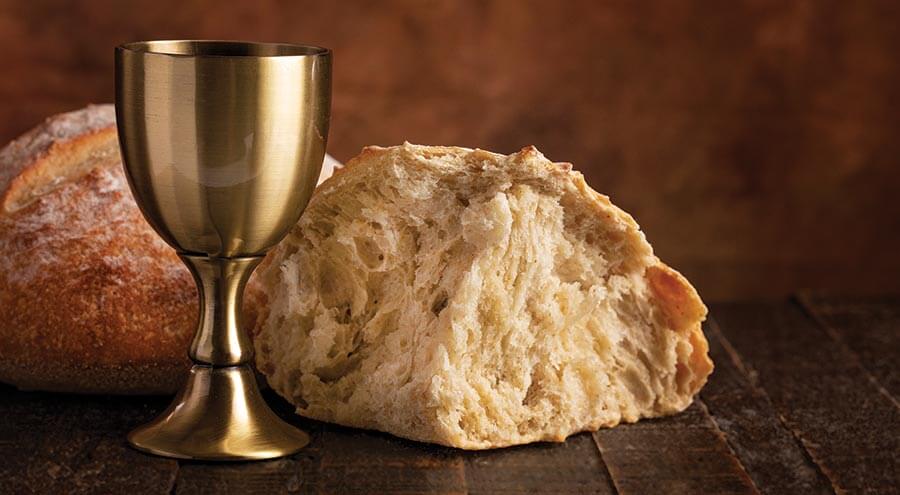Why are There Two Different Emblems?
The spiritual body is bound together by love, especially Christ’s love.
 Read Time: 3 minutes
Read Time: 3 minutes
Why are there two different emblems—bread and wine—at the memorial meeting?
The obvious answer is that the bread represents Christ’s body, and the wine represents his blood. But that answer seems inadequate since either one alone could symbolize Christ’s sacrificial death. Is there some further reason?
The bread represents the strength of Christ’s life, a life totally dedicated to the will of the Father. The wine particularly represents his death; the blood willingly poured out as a climax to his life’s work. And the wine could also suggest the joy of all believers’ reunion with Jesus Christ:
I will not drink of this fruit of the vine from now on until that day when I drink it anew with you in my Father’s kingdom. (Matt 26:29).
In the upper room, the bread was broken and passed to each disciple. Then each disciple drank a portion of the wine. But this does not mean that Christ can be divided or that we believers should be broken or divided from one another. All the blessings belong to every individual among us! The body which the bread represents, that is, Christ’s spiritual “body” of believers, cannot be broken. It is one:
Because there is one loaf, we, who are many, are one body. (1 Cor 10:17).
Paul goes on to say that the body is united, “held together” or “supported” (“knit together” KJV), in love with the Head, who is Christ himself (Col 2:2,19). As the natural body is held together by ligaments and sinews and nurtured together through a single circulatory system, the spiritual body is bound together by love, especially Christ’s love.
A Funeral
Our memorial service is like a funeral in “proclaiming the Lord’s death until he comes.” (1 Cor 11:26). In attending a funeral, we show respect for the deceased and for the occasion. We also recognize, for ourselves as well, the solemnity of both life and death and how, in our daily lives, we come in contact with eternal things. “Ask not for whom the bell tolls; it tolls for thee.” Surely, if we grasp this fact, we need not worry that we will forget to examine ourselves.
A Funeral and a Celebration
Of course, this is a unique funeral because the one who was dead is now alive, gloriously and eternally alive. The joy of this fact will offset the seriousness of the occasion: The one who died for each of us is alive forevermore. What a promise there is in our Lord’s words:
Every memorial meeting helps us to remember and reaffirm to ourselves the basis of our faith:
- that Christ is our Head;
- that he died for each of us;
- that we all belong to him;
- and consequently, we also belong to one another;
- that we are all honor-bound to love one another, and
- care for one another no matter how difficult that may seem to be;
- that we must forgive one another even as we are forgiven by God;
- that this life is not an end in itself but a preparation for the age to come;
- and that our Savior, Jesus Christ, is coming again.
If this is our spirit and attitude on such occasions, we will show Christ’s death, resurrection, and love until he comes.
At the memorial table, we see a funeral and we also see a king coming in royal glory. We must put these two ideas together and hold both of them in our minds at the same time. When we prepare or serve the emblems or partake of them, we are thinking of the terrible death of a perfect man. But concurrently, we can rejoice because we know a new creation is dawning in his resurrection and his promise: “I will come again.” (John 14:3).
George Booker,
Austin Leander Ecclesia, TX